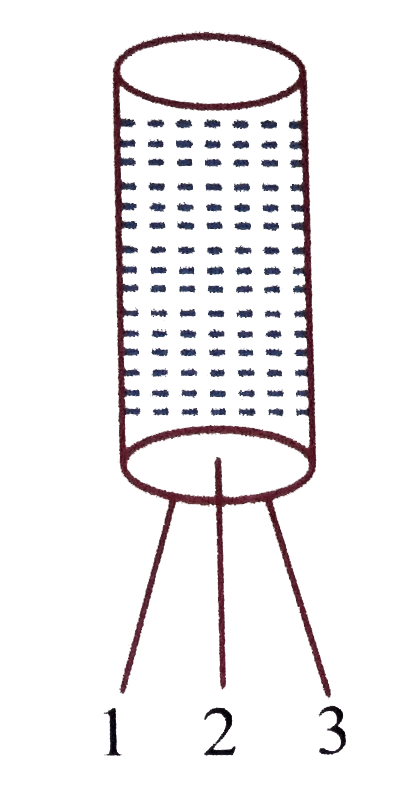Consider the transistor shown in figure, its terminals are marked as 1, 2 and 3 using multimeter one try to identify the base of transistor he proceed in the way as follows
Experiment 1: He touches the common lead of the mulimeter to 2 then on touching other lead of miltimeter of 1 he hasn't got any becp(indication of conduction)but when connected to 3got the beep
Experiment II : He connects the common lead of multimeter to 1 and other lead to 2 and 3 turn by turn then in this case he got beep for both connections. From this we conclude that

1 is base
2 is base
3 is base
None of these
The correct Answer is:A
Topper's Solved these Questions
- EXPERIMENTAL PHYSICSBOOK - NARAYNACHAPTER - EXPERIMENTAL PHYSICSEXERCISE - Level-v(Single answer)
23 Videos
- EXPERIMENTAL PHYSICSBOOK - NARAYNACHAPTER - EXPERIMENTAL PHYSICSEXERCISE - Multiple answer
6 Videos
- ELECTROSTATICS AND GAUSS LAWBOOK - NARAYNACHAPTER - ELECTROSTATICS AND GAUSS LAWEXERCISE - Intergers type question
11 Videos
- MAGNETISMBOOK - NARAYNACHAPTER - MAGNETISMEXERCISE - LEVEL-II (H.W)
24 Videos
Similar Questions
Consider the transistor shown in figure, its terminals are marked as 1,2 and 3. Using multimeter one try to identify the base of transistor, he proceed in the way as follows. Experiment I: He touches the common lead of the multimeter to 2, then on touching other lead of multimeter to 1 he hasn.t got any beep (indication of conduction) but when connected to 3 got the beep.
Experiment II: He connected the common lead of multimeter to 1 and other lead to 2 and 3 one by one then in this case he got beep for both connections. From this we conclude that

View SolutionHe has got two summons.
View Solution
Knowledge Check
He hasn't slept in his bed.
AHis bed hasn't been slept in.BHe had not been slept in his bed,CHis bed had been slept in.DHis bed had not been slept in.When a multimeter is connected to a transistor, it conducts when
Abase-emitter is forward biasedBbase-collector is forward biasedCbase-emitter is reverse biasedDbase-collector is reverse biasedA working transistor with its three legs marked P,Q, and Ris tested using a multimeter to Rand the other (positive) terminal to P or Q . Some resistance is seen on the muiltimeter. Which of the following is true for the transistor ?
AIt is pnp transistor with R as emitterBIt is npn transistor with R as collectorCIt is npn transistor with R as baseDIt is pnp transistor with R as collector
To identify whether the transistor is working or not using multimeter, which statement serves the purpose?
View SolutionTo identify whether the transistor is working or not, using multimeter, which statement serves the purpose?
View SolutionHugo de Vries formulated the "Mutation Theory" based on the experiments he conducted on
View SolutionChoose the correct form of tense for the given sentence :
Although he….hard for over five years, he hasn't got a degree yet.
View SolutionA working transitor with its three legs marked P,QandR is tested using a multimeter No conduction is found between P,Qby connecting the common (negative) terminal of the multimeter to Rand the other (positive) terminal to or Q some resistance is seen on the multimeter . Which of the following is true for the transistor ?
View Solution
